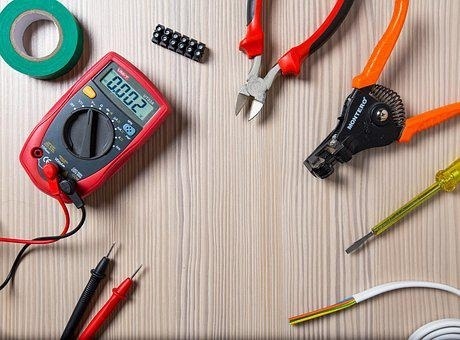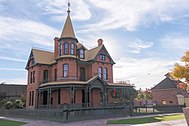Electrician in Tucson
Electrician Tucson
An electrician's licensing grade is a good indicator of their level of experience. The higher the license grade, the more extensive their training and experience, which in turn translates into a higher rate. A licensed electrician will typically quote the total cost of the project in advance. It's a good idea to get several detailed bids, as well as discussing unforeseen situations. It's also a good idea to read over any warranties offered by the electrician.

Electricians Tucson
The NECA, a major association of electrical contractors in America, is a leader. The association works to establish and maintain strong labor relations and advocates for the highest standards of electrical contractors' laws and regulations. NECA offers educational programs, newsletters and updates on laws and other services to its members. The organization monitors the state legislation closely to ensure members receive the most current developments in the industry. They cover all aspects of electric construction.
Electrician in TucsonElectrician in Tucson
Check their past references. For feedback from previous customers, you can contact them. You can also ask your friends for references on a competent electrician. You can also search the internet for reviews and ask for references, if needed. You should also ensure you are checking the licensing board of electricians in order to avoid scams, unprofessionalism and other pitfalls.


Electricians Tucson
An average home inspection costs $100 to $400 per session. This price is an average, and may increase if your home is larger. An electrician can inspect your home and help you avoid spending more money if there is a problem. A home electrical inspection will also protect you against costly surprises at closing.
Tucson Electrician
An electrical safety inspection will reveal issues such as degraded wiring, overloading circuits, or lack of earthing. Non-professional electricians or DIY homeowners can also be detected, which can pose an electric shock risk. An electrical safety inspection is vital when selling or buying a house. A home inspection is particularly important if it is older than 25-years old or if there are plans to add light fixtures or appliances.

Electrician Tucson AZ
Sheathed cable can be classified according to its gauge. Underground feeder cables, for example, are all gray, while those used on buildings are usually white or black. Color coding is a recent innovation in the electrical industry, but it has not become a mandatory requirement for wiring. A wire of a certain color is the neutral wire of the circuit, which completes the circuit by carrying the current back to the electrical panel.
Electricians Tucson Arizona
Keep your electrical devices away from water to keep them from overheating. Keep them out of direct contact with water. Also, keep them dry when you are not using them. You should keep electrical fires out of reach of water. If you don’t wish to let them burn, keep the area away from any electrical devices. Protective covers or caps are also available to prevent electrical devices overheating.

About Phoenix AZ
Phoenix, Arizona
|
Phoenix, Arizona
|
|
|---|---|
| City of Phoenix | |
|
Clockwise, from the top: Downtown Phoenix, St. Mary's Basilica, Rosson House, Mystery Castle, Camelback Mountain, Arizona State Capitol, Arizona Science Center, Chase Tower, and the Papago Park
|
|
|
|
|
| Nickname(s):
"Valley of the Sun", "The Valley"
|
|

Interactive map of Phoenix
|
|
Coordinates:  33°26′54″N 112°04′26″WCoordinates: 33°26′54″N 112°04′26″WCoordinates:  33°26′54″N 112°04′26″W 33°26′54″N 112°04′26″W |
|
| Country | United States |
| State | Arizona |
| County | Maricopa |
| Settled | 1867 |
| Incorporated | February 25, 1881 |
| Founded by | Jack Swilling |
| Named for | Phoenix, mythical creature |
| Government | |
| • Type | Council-Manager |
| • Body | Phoenix City Council |
| • Mayor | Kate Gallego (D) |
| Area | |
| • State Capital | 519.28 sq mi (1,344.94 km2) |
| • Land | 518.27 sq mi (1,342.30 km2) |
| • Water | 1.02 sq mi (2.63 km2) |
| Elevation | 1,086 ft (331 m) |
| Population
(2020)
|
|
| • State Capital | 1,608,139 |
| • Estimate
(2021)[3]
|
1,624,569 |
| • Rank | 5th in the United States 1st in Arizona |
| • Density | 3,102.92/sq mi (1,198.04/km2) |
| • Metro | 4,845,832 (11th) |
| Demonym | Phoenician |
| Time zone | UTC−07:00 (MST (no DST)) |
| ZIP Codes |
85001–85099
|
| Area codes | |
| FIPS code | 04-55000 |
| GNIS ID(s) | 44784, 2411414 |
| Major airport | Phoenix Sky Harbor International Airport |
| Secondary Airports | Deer Valley Airport Phoenix–Mesa Gateway Airport |
| Interstates | |
| U.S. Highways | |
| State Routes | |
| Public transportation | Valley Metro |
| Website | www |
Phoenix (/ˈfiːnɪks/ FEE-niks; Navajo: Hoozdo; Spanish: Fénix or Fínix,[citation needed] Walapai: Banyà:nyuwá[5]) is the capital and most populous city of the U.S. state of Arizona, with 1,608,139 residents as of 2020.[6] It is the fifth-most populous city in the United States,[7] and one of only two U.S. state capitals with a population of more than one million residents, along with Austin, Texas.[8][9][10]
Phoenix is the anchor of the Phoenix metropolitan area, also known as the Valley of the Sun, which in turn is part of the Salt River Valley. The metropolitan area is the 11th largest by population in the United States, with approximately 4.85 million people as of 2020.[9] Phoenix, the seat of Maricopa County, has the largest area of all cities in Arizona, with an area of 517.9 square miles (1,341 km2), and is also the 11th largest city by area in the United States.[11] It is the largest metropolitan area, both by population and size, of the Arizona Sun Corridor megaregion.
Phoenix was settled in 1867 as an agricultural community near the confluence of the Salt and Gila Rivers and was incorporated as a city in 1881. It became the capital of Arizona Territory in 1889.[12] It is in the northeastern reaches of the Sonoran Desert and has a hot desert climate.[13][14] Despite this, its canal system led to a thriving farming community with the original settlers' crops remaining important parts of the Phoenix economy for decades, such as alfalfa, cotton, citrus, and hay.[15][16] Cotton, cattle, citrus, climate, and copper were known locally as the "Five C's" anchoring Phoenix's economy. These remained the driving forces of the city until after World War II, when high-tech companies began to move into the valley and air conditioning made Phoenix's hot summers more bearable.[17]
The city averaged a four percent annual population growth rate over a 40-year period from the mid-1960s to the mid-2000s.[18] This growth rate slowed during the Great Recession of 2007–09, and has rebounded slowly.[19] Phoenix is the cultural center of the state of Arizona.[20] Phoenix is also majority minority, with 42.6% of its population identifying as Hispanic and 42.5% as "white" in the 2020 census.[21]










